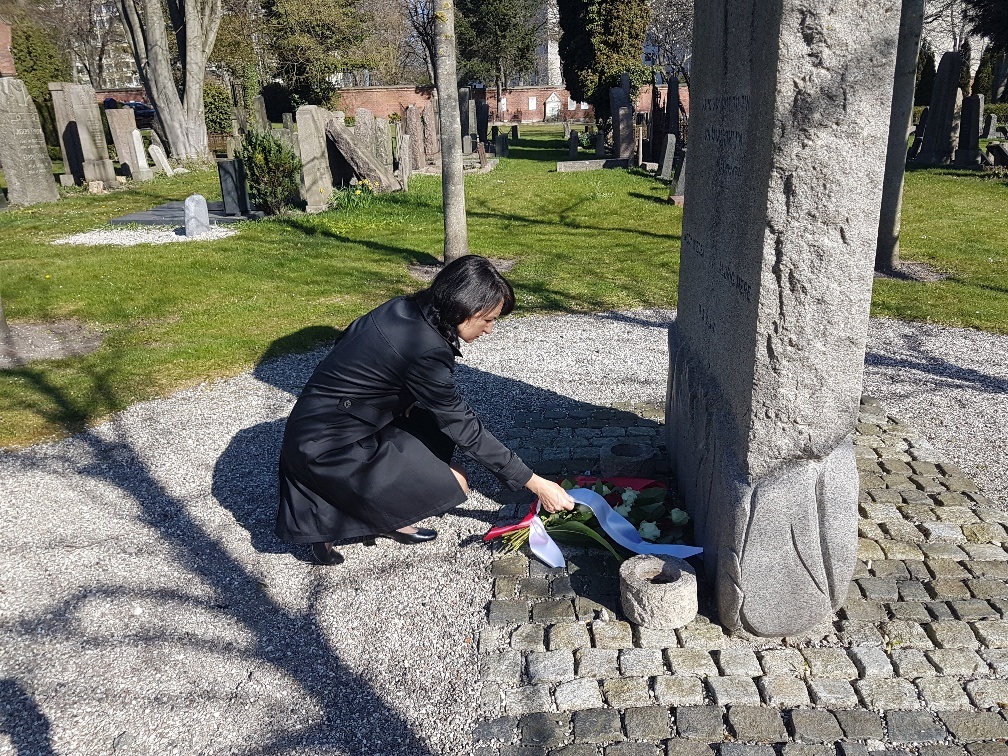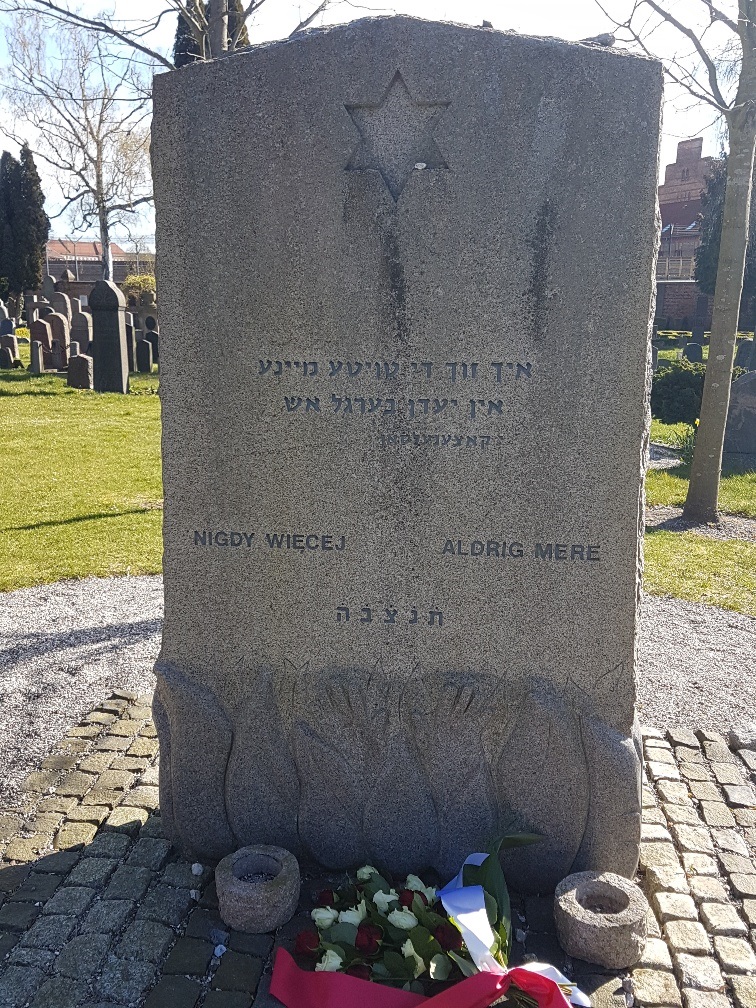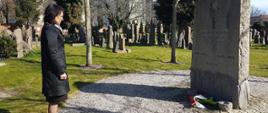77th Anniversary of the Warsaw Ghetto Uprising
19.04.2020
On the occasion of the 77th anniversary of Warsaw Ghetto Uprising Ambassador Henryka Mościcka Dendys commemorated the heroes of the uprising laying flowers at the monument of Holocaust Victims at the Jewish Venstre Kirkegård in Copenhagen.

The day before the 77th anniversary of Warsaw Ghetto Uprising, on 18th of April 2020, Ambassador Henryka Mościcka Dendys laid a symbolic wreath at the monument of the Holocaust Victims at the Jewish Venstre Kirkegård in Copenhagen.
The uprising started on 19th of April 1943. When the 2,000 soldiers strong German units, supported by tanks and armoured vehicles entered the Ghetto on the eve of the Passover holiday, they were faced by several hundred members of The Jewish Combat Organisation (Żydowska Organizacja Bojowa, ŻOB) divided into 22 militant groups led by Mordechaj Anielewicz, along with 150 militants of the Jewish Military Union.
The Germans squeezed over 400,000 Jews within the walled-in area of the Warsaw Ghetto – residents of the city and the neighbouring towns and villages, as well as deportees from the territories incorporated into the 3rd Reich. On 22 July 1942, the so-called Great Deportation “Gross-Aktion” began. Within the period of two months the Germans deported over 250,000 Ghetto residents to their deaths at the Treblinka extermination camp. Mere 60,000 Jews remained in the so-called Restgetto (Ger.: the remnants of a ghetto). They were mostly young and strong, with no family ties, often employed at the German shops (i.e. small factories or workshops). It was in these circumstances, with nothing left to lose, that the idea of armed resistance against the Nazis was born amongst the Jewish youth in the Warsaw Ghetto. Another deportation Aktion, launched by the Germans on 18 January 1943, was met with an armed resistance of the ŻOB militants. The 4-day long self-defence delayed the final liquidation of the Ghetto and provided some time for the preparations for armed uprising.
Over the first few days, the insurgents engaged in street skirmish, throwing grenades and bottles with petrol at the German units. Near the Ghetto entrance gate on Wałowa Street, the ŻOB militants stopped an SS column by detonating a special sort of landmine. Jewish and Polish flags hung on a tall tenement house at Muranowski Square where ŻZW unit led by Paweł Frenkel fiercely resisted German attacks, became a symbol of the Uprising. The ŻOB militants led by Marek Edelman engaged in heavy combat on the location of the so-called ‘brush shop’.
The subsequent combat meant mainly defending specific bunkers and buildings. The Germans systematically searched one block after another, setting fire to each building they had searched and plundered. Historians estimate that during the liquidation of the Ghetto 7,000 Jews were shot on the spot, 7,000 were sent off to the Treblinka death camp and 36,000 were deported to labour camps in the Lublin province. Mere several dozen of the insurgents managed to flee the burning Ghetto through the sewers or underground tunnels. Many of the survivors were later killed as a result of denunciations; some fought in the Warsaw Uprising. On 8 May 1943, the Germans surrounded the bunker of the ŻOB headquarters at 18 Miła Street. Over a hundred of militants, including Mordechaj Anielewicz, suffocated to death or swallowed poison in order to avoid being captured by the Germans. However, several small groups of insurgents continued to resist until 16 May. In the evening of that day, to mark their victory, the Germans blew up the Great Synagogue on Tłomackie Street, the area beyond the Ghetto borders. In the aftermath of the Uprising, the Germans razed the area of the former Warsaw Ghetto to the ground. The Warsaw Ghetto Uprising was the largest and most heroic act of armed resistance taken up by the Jews during World War Two. It was also the first civic uprising in occupied Europe.
Information about the uprising based on the information by Polin, the Museum of the History of Polish Jews.


